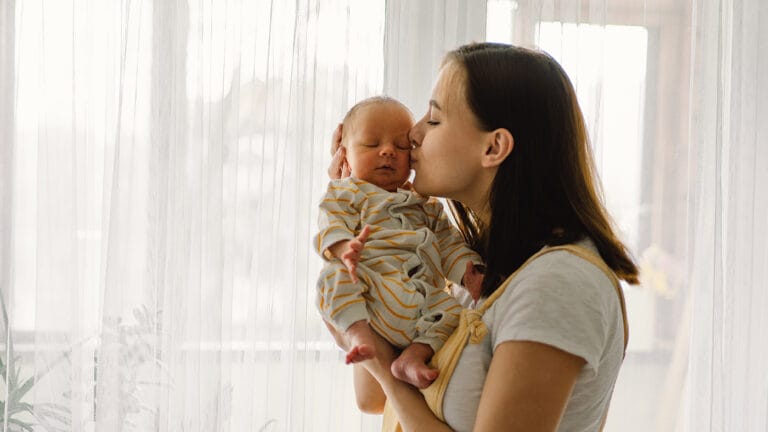No one likes to talk about cancer. It’s a despicable group of diseases that are, unfortunately, incredibly common. According to the Mayo Clinic, there’s a roughly 40% chance that each individual will develop some form of cancer throughout an ordinary lifetime.
Individual risk varies from person to person and depends on genetic and environmental factors. All things being equal, age is the most significant cancer risk factor, with most diagnoses happening later in life. What is childhood cancer? It is a rare but serious disease that remains the leading cause of death from illness in children.. If you have children or plan to have children in the future, awareness and vigilance are your greatest weapons in the fight against childhood cancers.
Causes of Childhood Cancers and How to Prevent Them
While childhood cancer is the leading cause of childhood death from illness, survival rates and outcomes have improved dramatically over the last several decades. Since 1970, deaths from childhood cancer have declined by approximately 70%.
In 2024, the United States anticipates roughly 1,000 new cancer diagnoses in patients 14 or younger, and 89% of those children are expected to survive. Unfortunately, while research into adult cancers has revealed a wide range of risk factors, causes of childhood cancer aren’t as well understood. Most common childhood cancers (leukemias, lymphomas, and brain/central nervous system tumors) aren’t caused by anything parents or caregivers could have prevented.
With that being said, Human papillomavirus (HPV) is known to cause at least six different types of cancer, and the virus is transmissible. HPV is so widespread in the environment that most people are exposed to it throughout their lifetimes. Vaccination against HPV can reduce the probability of developing certain types of cancers and is recommended for children aged nine or older. How to prevent childhood cancer? HPV vaccination is one of the simplest forms of active cancer prevention. It is helpful for nearly all kids, including childhood cancer survivors, who are at greater risk of developing HPV cancers later in life.
Childhood Cancer Patients, Fighting Childhood Cancer
A cancer diagnosis can be overwhelming, but you don’t have to carry the load alone. After a diagnosis, you’ll be surrounded by specialists focused on ensuring your child and your family receive rapid, evidence-based care and support.
Pediatric oncology specialists focus specifically on treating childhood cancers and are well-versed in the unique factors at play inside young bodies. In addition, your pediatric oncologists may work with your primary care physician, pediatric surgical subspecialists, radiation specialists, hematologists, rehabilitation specialists, nurses, social workers, and more. Every cancer diagnosis is different, and your care team will be tailored to fit your child’s specific needs.
Treatments will depend on the type of cancer, its location, and its level of progression. Standard treatment methods to fight childhood cancer include some combination of surgery, chemotherapy, radiation therapy, immunotherapy, and stem cell therapies.
After treatment is completed, you’ll receive a survivorship care plan to help your child and family transition out of the treatment period and into long-term maintenance. Beating cancer into cellular dust is a huge win! You should absolutely take a beat to celebrate, but don’t let up.
Cancer cancer patients are at higher risk than their peers of developing other cancers in the future, so it’s crucial to keep an eye on things in case cancer rears its head again. There are also potential downstream impacts from the cancer or treatment. So-called “late effects” can show up months or years later and are of particular concern for childhood cancer survivors because they have so much of their lives still ahead of them.
It’s also worth noting that not all late effects are physical. Surviving something like cancer at such an impressionable age can have lifelong emotional and psychological impacts. Even patients who are cancer-free still live with the psychic weight of the experience. Asking a child to return to “ordinary life” as if it never happened is probably expecting too much. The childhood cancer survivors in your life are going to need your love and support long after their last treatment.
Raising Awareness for Childhood Cancers
The childhood cancer landscape in the United States and other high-income nations looks better and better all the time. We’re getting better at making detections, diagnoses, and more effective treatment methods. Globally, the situation isn’t as good.
An estimated 400,000 children develop cancer globally every year, according to the World Health Organization (WHO). Only about half of those kids will receive a diagnosis, and a smaller portion will have access to care. The bottom line is that the most significant factors leading to undesirable outcomes are delayed diagnosis, misdiagnosis, lack of diagnosis, and a lack of access to treatment.
Each September is Childhood Cancer Awareness Month (CCAM) and an opportunity to bang the drum about cancer awareness and research. The American Childhood Cancer Organization (ACCO) has a couple of ready-made fundraising projects that folks can use to help raise awareness and funds for researching and treating childhood cancers worldwide.
Cancers thrive in the darkness; they grow and spread when we’re not paying attention. Your best weapon against childhood cancer is to put it under a spotlight and stare it in the face. Awareness saves lives.






